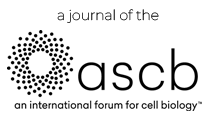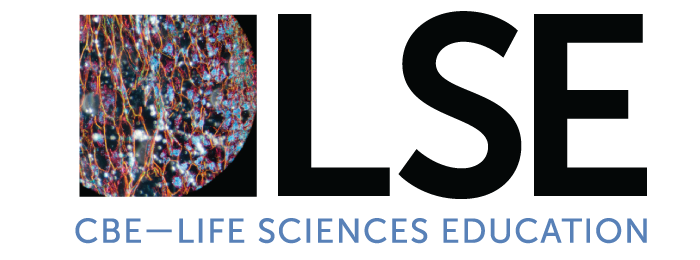Developing Self-Awareness
Knowing one’s own professional and social identity is the key first step in developing a classroom built on inclusive relationships. The process of knowing oneself may force a reckoning with our previously unexamined relationships with power structures and can be emotionally uncomfortable. This is not an easy step and will require time and space to engage in the mindset shifts it may engender. For this reason, it is recommended that these steps occur outside of the teaching semester, so the instructor has an opportunity to reflect on the ways the ideas impact their classroom. The book chapters and article summarized and linked below can provide guidance for this process. In addition, instructors should consider taking the following steps:
- Take the Implicit Association Test. The website contains a number of tests based on different identities around which biases exist.
- Read literature on the history of the social context of higher education., such as
- bell hooks’ Teaching to Transgress: Education as the Practice of Freedom
- Sylvia Hurtado’s “The campus racial climate: Contexts of conflict,” in The Journal of Higher Education, volume 63, pp. 539-569
- John Thelin’s A History of American Higher Education.
- Write a positionality statement. Sherry Hamby’s blogpost, “Know Thyself: How to Write a Reflexivity Statement,” in Psychology Today provides a useful guide for how to get started.
 Bell, L.A., Washington, S., Weinstein, G. & Love, B. (1997). Knowing ourselves as instructors. In M. Adams, M, and Bell, L.A. (Eds) Teaching for Diversity and Social Justice. New York: Routledge. In this chapter, the authors detail the process and struggles associated with knowledge of self. They point out that pedagogies of social justice typically focus on the identities of the students and fail to, as often as they should, incorporate instructor identities. Knowledge of self in this context begins with being aware of the multiple identities that one might hold as an instructor. These identities may predispose you to categorize yourself with the identities of historical disempowerment perpetrators or the targeted. Navigating this process is essential to developing awareness. The authors detail the obliviousness that dominant culture groups sometimes have to class structures within their classrooms, making it more necessary for them to engage in a self-awareness process. Knowing oneself as the instructor is also critically important for instructors who address issues of inclusion directly in their classrooms. Discussions of this nature can be emotionally intense, and, if not managed well, can spawn conflict within the classroom. The charged nature of socially sensitive topics requires instructors to approach them with a great deal of care and protection for discussion participants. This necessitates the instructor being aware of their own identity, and how they may be perceived in the context of the inclusion practice.
Bell, L.A., Washington, S., Weinstein, G. & Love, B. (1997). Knowing ourselves as instructors. In M. Adams, M, and Bell, L.A. (Eds) Teaching for Diversity and Social Justice. New York: Routledge. In this chapter, the authors detail the process and struggles associated with knowledge of self. They point out that pedagogies of social justice typically focus on the identities of the students and fail to, as often as they should, incorporate instructor identities. Knowledge of self in this context begins with being aware of the multiple identities that one might hold as an instructor. These identities may predispose you to categorize yourself with the identities of historical disempowerment perpetrators or the targeted. Navigating this process is essential to developing awareness. The authors detail the obliviousness that dominant culture groups sometimes have to class structures within their classrooms, making it more necessary for them to engage in a self-awareness process. Knowing oneself as the instructor is also critically important for instructors who address issues of inclusion directly in their classrooms. Discussions of this nature can be emotionally intense, and, if not managed well, can spawn conflict within the classroom. The charged nature of socially sensitive topics requires instructors to approach them with a great deal of care and protection for discussion participants. This necessitates the instructor being aware of their own identity, and how they may be perceived in the context of the inclusion practice.
 Rodgers, C.R. & Scott, K.H. (2008). The development of the personal self and professional identity in learning to teach. In Cochran-Smith, M. Feiman-Nemser, McIntyre, D.J., and Demers, K.E. (Eds.) Handbook of Research on Teacher Education. Abingdon: Routledge. The authors summarize a decade of research on identity theory, and particularly its role in how teachers approach their craft. Identity is a construct with multiple components, and its manifestation is highly context-dependent. The discussions on identity are largely based on constructive developmental theory which argues that sense of self makes meanings at different levels and scales. When instructors develop professional identities, that development is impacted by the ways in which other aspects of their identity are interpreted. Four basic assumptions govern how identity is understood. It is seen as 1) a function of the social, political and historical contexts that inform it, 2) a construct formed involving emotions and in relation with others, 3) shifting and 4) requiring the reconstruction of meaning through stories. The ways in which instructors incorporate the above to develop meaning and awareness in their craft is what constitutes professional identity. The authors then provide a summary of teacher education programs at the K12 level whose curriculum was built around the importance of continual development of self and professional identity. Two key pieces emerge from this analysis. First is the need for faculty developers to be cognizant of both the different developmental needs of participants, and the diverse ways in which they interpret meaning at multiple scales. Secondly, STEM faculty should invest in the time to explore how they construct their own professional identities within the contexts of the parameters described above.
Rodgers, C.R. & Scott, K.H. (2008). The development of the personal self and professional identity in learning to teach. In Cochran-Smith, M. Feiman-Nemser, McIntyre, D.J., and Demers, K.E. (Eds.) Handbook of Research on Teacher Education. Abingdon: Routledge. The authors summarize a decade of research on identity theory, and particularly its role in how teachers approach their craft. Identity is a construct with multiple components, and its manifestation is highly context-dependent. The discussions on identity are largely based on constructive developmental theory which argues that sense of self makes meanings at different levels and scales. When instructors develop professional identities, that development is impacted by the ways in which other aspects of their identity are interpreted. Four basic assumptions govern how identity is understood. It is seen as 1) a function of the social, political and historical contexts that inform it, 2) a construct formed involving emotions and in relation with others, 3) shifting and 4) requiring the reconstruction of meaning through stories. The ways in which instructors incorporate the above to develop meaning and awareness in their craft is what constitutes professional identity. The authors then provide a summary of teacher education programs at the K12 level whose curriculum was built around the importance of continual development of self and professional identity. Two key pieces emerge from this analysis. First is the need for faculty developers to be cognizant of both the different developmental needs of participants, and the diverse ways in which they interpret meaning at multiple scales. Secondly, STEM faculty should invest in the time to explore how they construct their own professional identities within the contexts of the parameters described above.
 Weinstein, G. & Obear,K. (1992). Bias issues in the classroom: Encounters with the teaching self. New Directions for Teaching and Learning 52, 39-50. In this personal account, the authors elaborate on the psychologies emergent from confronting issues pertaining to bias in the classroom. While STEM courses may or may not engage the type of conversations described in the article, the context of the confrontation provides a useful lens to discuss encounters with the teaching self. Using themselves as an example, the author positions his multiple identities both within the context of the discussion taking place, and the identities of the students who are also part of the dialogue. While incidents of bias are unfortunate, understanding the underlying reasons for both the incident and potential reactions can be crucial to unpacking self encounters. A key piece of this is the default distancing an instructor might resort to, separating pedagogical praxis from engaging the total body of the student. In this vein, safety occurs through conflict avoidance, and precludes the need for any self-examination. However, how the instructor handles difficult dialogue can reveal as much about the instructor as the instigator of an incident of bias. Therefore, the article concludes by summarizing self attributes that allow both for continuous reflection of self, and tools to navigate tricky dialogues on race, class and bias.
Weinstein, G. & Obear,K. (1992). Bias issues in the classroom: Encounters with the teaching self. New Directions for Teaching and Learning 52, 39-50. In this personal account, the authors elaborate on the psychologies emergent from confronting issues pertaining to bias in the classroom. While STEM courses may or may not engage the type of conversations described in the article, the context of the confrontation provides a useful lens to discuss encounters with the teaching self. Using themselves as an example, the author positions his multiple identities both within the context of the discussion taking place, and the identities of the students who are also part of the dialogue. While incidents of bias are unfortunate, understanding the underlying reasons for both the incident and potential reactions can be crucial to unpacking self encounters. A key piece of this is the default distancing an instructor might resort to, separating pedagogical praxis from engaging the total body of the student. In this vein, safety occurs through conflict avoidance, and precludes the need for any self-examination. However, how the instructor handles difficult dialogue can reveal as much about the instructor as the instigator of an incident of bias. Therefore, the article concludes by summarizing self attributes that allow both for continuous reflection of self, and tools to navigate tricky dialogues on race, class and bias.









